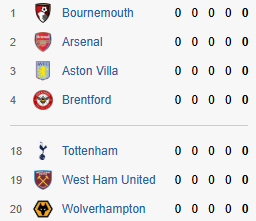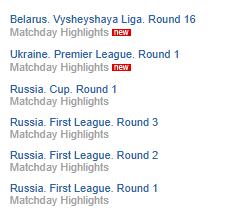How LiveTV Is Transforming the Global Sports Ecosystem
Opening Snapshot
A deafening roar erupts from a stadium halfway across the world, signaling a breathtaking last-second victory. Almost instantly, fans in diverse time zones and continents celebrate in unison, reacting to the same high-stakes moment. Some watch on their smartphones while commuting, others stream through smart TVs in the comfort of their living rooms, and a handful follow via a custom webcast tailored to real-time analytics. In this scene, LiveTV is the unifying force—an ecosystem that transcends traditional broadcasting, enabling both casual and passionate fans to connect with the action anytime, anywhere.
Live sports have always been about emotion and shared experiences. Whether it’s the tension in the final seconds of a basketball game or the collective gasp when a soccer ball hits the crossbar, the thrill of live action draws people together. But in the past, geography, scheduling, and limited viewing platforms often excluded many would-be spectators. Now, LiveTV removes those barriers, allowing fans from every corner of the globe to tune in at the exact moment that history unfolds. This phenomenon is more than a mere technological upgrade—it’s a reinvention of how sports are consumed, discussed, and ultimately remembered.
The Rise of Digital Fandom
Sports fandom is undergoing a profound transformation. Where once entire families gathered around a single television set to view a game at a predetermined time, fans now demand access on multiple devices—live or on-demand—across a variety of platforms. This shift emerged from the convergence of high-speed internet, the proliferation of mobile technology, and the evolving preferences of a hyper-connected global audience. Millennials and Gen Z consumers, in particular, prioritize immediacy, personalization, and social interactivity, all of which LiveTV is uniquely equipped to deliver.
Digital fandom breaks down barriers of geography and scheduling. For instance, supporters of a European soccer club can tune in from Asia or North America without relying on costly satellite packages or battling obscure time zones. Meanwhile, sports communities flourish on social media. Platforms like Twitter and Reddit host vibrant discussions before, during, and after events, creating a second screen that magnifies key plays, debates, and fan reactions. LiveTV solidifies that connection, ensuring that excitement, heartbreak, and celebration aren’t confined to a single television channel or physical location. Instead, they expand into a communal digital space, extending well beyond the final whistle.
In addition to granting a larger global reach, LiveTV empowers fans to consume sports on their own terms. They can watch an entire match live, catch a condensed replay, or delve into post-game analysis—and they can do it whenever they want. This kind of flexibility fosters not only deeper engagement but also sustained interest over time, helping casual viewers evolve into dedicated fans of teams and leagues they might otherwise have overlooked.
Behind the Screens: Inside the LiveTV Workflow
The moment a game-winning shot is taken, a sophisticated workflow kicks into gear to bring that experience to viewers worldwide. On-site production teams use multiple high-definition or even 4K cameras to capture every angle: wide shots that showcase overall strategy, close-ups to highlight player emotions, and specialty cameras for immersive replays. These feeds are sent to production control rooms, where producers switch between angles, add instant replays, and overlay graphics that detail player stats or pivotal match facts.
Once the footage is ready for broadcast, encoding processes compress the massive video data to a size that’s manageable for internet delivery. Content delivery networks (CDNs) then distribute the stream across a global network of servers, minimizing latency and buffering. Adaptive bitrate streaming refines it further: the system detects each viewer’s internet speed and device capabilities, automatically adjusting the video quality in real time. The final piece of the puzzle is the user interface—apps, websites, or smart TV portals. These must remain intuitive, stable under high traffic, and capable of delivering the live feed with minimal delay. Together, these elements form an intricate dance of technology, ensuring that when sports magic happens on the field, fans around the world witness it almost instantaneously.
Beyond the technical complexities, there’s also the artistry of live production. Camera operators anticipate pivotal plays; directors balance replays with live action; and on-screen graphics teams collaborate with commentators to present insightful data at just the right moment. All of these behind-the-scenes efforts converge to create a seamless experience for the viewer, turning a raw athletic contest into a polished broadcast event that immerses people—whether they’re in the next neighborhood or halfway across the globe.
Athlete Perspectives and Branding Opportunities
LiveTV isn’t just a boon for fans—it’s also a powerful branding and engagement tool for athletes. Players can reach global audiences directly through specialized streaming sessions: they might host Q&A segments during off-season breaks, or go live post-match to discuss performances and interact with supporters. These real-time connections humanize athletes, breaking down the once-impenetrable wall between sports idols and everyday fans. In this new media landscape, a star forward from a local league can cultivate an international following, bridging cultures and time zones with a single broadcast.
Sponsorship and advertising possibilities expand dramatically in this setting. Brands looking to connect with diverse audiences see digital platforms as crucial gateways. A post-game interview streamed via a player’s personal channel might seamlessly include sponsor messages, product placements, or charitable initiatives. Meanwhile, partnerships between streaming services and popular athletes can yield exclusive content, such as behind-the-scenes training footage or lifestyle features, that elevate both the athlete’s personal brand and the platform’s visibility. These nuanced digital relationships allow athletes to shape their own narratives, opening revenue streams that extend well beyond the traditional confines of a sports contract.
Fan Engagement 2.0
One of LiveTV’s most compelling strengths lies in how it heightens interactivity. During a tense basketball playoff, fans might host virtual watch parties in which a group video chat or live forum runs parallel to the main broadcast. Real-time polls invite viewers to predict the final score or “vote” for the MVP, transforming passive observation into active participation. Meanwhile, social media chatter—hashtags, rapid-fire highlights, and animated reaction GIFs—magnifies significant moments, fueling a collective conversation that transcends borders and languages.
User-generated content becomes a thriving subculture within sports streaming. Fans with creative flair produce alternative commentary tracks, remix highlights to music, or compile comedic blooper reels. In some instances, platforms integrate “fan cams,” spotlighting supporter reactions at home—elated cheers, facepalm disbelief, and everything in between. This many-to-many network of shared energy bridges physical distances, creating virtual communities that rival the electric atmosphere of a sold-out stadium. It also introduces fresh narratives, as fans become co-creators of the sports experience rather than mere spectators.
Spotlight on Emerging Sports
The democratizing power of LiveTV has unlocked unprecedented visibility for smaller leagues, niche sports, and underrepresented athletes. Before the streaming revolution, broadcast networks prioritized mainstream competitions with the biggest ratings. Now, specialized channels and digital platforms can cater to everything from women’s volleyball to extreme skateboarding, offering them a dedicated space to shine. For instance, an upstart cricket league in South Asia can attract viewers in Europe or the United States through targeted subscriptions, bringing new audiences to a sport they may never have encountered on conventional cable TV.
This enhanced visibility does more than just entertain—it can elevate entire communities. Athletes who once played in relative obscurity can build robust online profiles through highlights, interviews, and social engagement. Over time, that traction can translate into sponsorship deals, professional contracts, and stronger fan bases. Niche sporting events that struggled for basic coverage in the past might become headline acts in the streaming world, broadening the horizons of sports culture and challenging the dominance of long-established leagues.
Beyond the Subscription: Financial and Legal Frameworks
Monetizing LiveTV differs significantly from the entrenched cable model. While some platforms mirror subscription bundles, others opt for pay-per-view structures, ad-supported streams, or hybrid approaches. This flexibility appeals to a broad user base, from die-hard fans who follow multiple leagues to casual viewers interested in a singular championship event. Yet, such freedom comes with complexity. Sports rights are typically sold by territory, generating a labyrinth of licensing agreements that can lead to blackouts or geo-blocking. This fragmentation can frustrate fans who find themselves juggling multiple subscriptions just to keep up with their favorite teams.
Piracy remains an ever-present threat in this environment. Unauthorized streamers offer free access, often financed by dubious advertisements or malicious links. Not only do these illicit streams compromise video quality and security, but they undermine legitimate revenue streams that fund leagues, teams, and athletes. To combat this, sports bodies and streaming services invest heavily in digital watermarking, robust takedown systems, and fan education about the risks of illegal viewing. As the market evolves, these strategies—along with fair pricing and user-friendly interfaces—are crucial to maintaining a sustainable ecosystem.
Challenges in the Age of Continuous Streaming
While LiveTV has revolutionized sports fandom, it’s not without obstacles. Network congestion can occur during blockbuster events like a World Cup final or a high-stakes playoff series, overwhelming servers and leading to buffering or temporary outages. Infrastructure disparities persist, particularly in rural or economically disadvantaged regions where unreliable or expensive internet limits streaming adoption. Even in well-connected areas, latency issues can plague viewers, with social media often spoiling a crucial goal or buzzer-beater moments before it appears on screen.
Subscription fatigue also looms as a formidable challenge. With different platforms securing exclusive rights to various leagues, fans sometimes need multiple subscriptions to follow all their favorites. Costs can add up quickly, prompting debates about whether the fractured streaming model is truly more consumer-friendly than cable bundles once were. Balancing these realities—technical constraints, platform competition, and the fight against piracy—demands ongoing innovation and collaboration among rights holders, service providers, and technology partners.
Where Technology Meets Imagination
LiveTV is poised for further transformation as new innovations arise. The rollout of 5G networks promises faster speeds and lower latency, paving the way for near-instantaneous streaming on mobile devices. This could revolutionize how fans watch on the go, ensuring consistent high-definition quality even during commutes or at crowded public events. Virtual reality (VR) and augmented reality (AR) experiences offer another frontier: imagine donning a VR headset to gain a courtside view, complete with ambient stadium sound and the ability to choose any angle. AR overlays might provide real-time statistics and performance metrics, layering data onto the live feed without interrupting the flow of the match.
Artificial intelligence could take highlight generation and personalization to unprecedented heights, instantly identifying key plays that match a viewer’s interests—whether it’s a star player’s every possession or a certain type of tactic. Gamification is another emerging trend, with viewers unlocking interactive features, quizzes, and achievements for watching multiple matches or predicting outcomes. These dynamic possibilities illustrate how sports broadcasting can evolve from a passive act of watching into a multi-faceted, immersive activity that merges data analysis, social connectivity, and entertainment.
Conclusion: Embracing the LiveTV Era
LiveTV stands at the intersection of technology, community, and sports, erasing boundaries that once confined fans to specific geographies or rigid broadcast schedules. Through innovative features, social interactivity, and diverse monetization models, it reimagines the fundamental relationship between sports and the global audience. No longer limited by the availability of cable channels or constrained by local broadcasting rights, fans can follow every thrilling pass, every last-minute goal, and every split-second knockout in nearly real time.
This era of streaming doesn’t merely replicate what television has done for decades—it actively reinvents how we experience competition. Smaller leagues and niche sports find new lifelines, while marquee events extend their reach far beyond stadium gates. Athletes forge deeper relationships with fans, building personal brands that resonate worldwide. And in this new paradigm, communities form online just as powerfully as they do in arenas, proving that geography is not a prerequisite for shared excitement.
While challenges persist—ranging from piracy to network limitations—each technological advance and industry partnership brings us closer to a unified sports landscape, one that embraces innovation without losing the soul of athletic drama. The LiveTV revolution is, at its core, about expanding the joy of sports to more people in more places. By intertwining real-time action with virtual connectivity, LiveTV ensures that every play can become a collective memory, forging bonds between fans, teams, and leagues in a boundless digital tapestry.






















